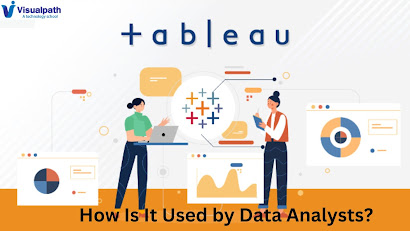Tableau and How is it Used by Data Analysts?

Introduction: Data analysts are skilled professionals who specialize in interpreting, managing, and analyzing data to extract valuable insights and inform decision-making processes within organizations. In today's data-driven world, extracting actionable insights from vast amounts of information is paramount for businesses to make informed decisions and gain a competitive edge. However, interpreting raw data can be challenging without the right tools. - Data Analytics Online Training Understanding Tableau: Tableau is a powerful and intuitive data visualization tool that enables users to create interactive and dynamic dashboards, reports, and visualizations from various data sources. Founded in 2003, Tableau has quickly become a leading choice for organizations of all sizes to analyze and visualize their data effectively. - Data Analytics Training in Ameerpet At its core, Tableau's strength lies in its ability to simplify complex data and present it in a format that...


